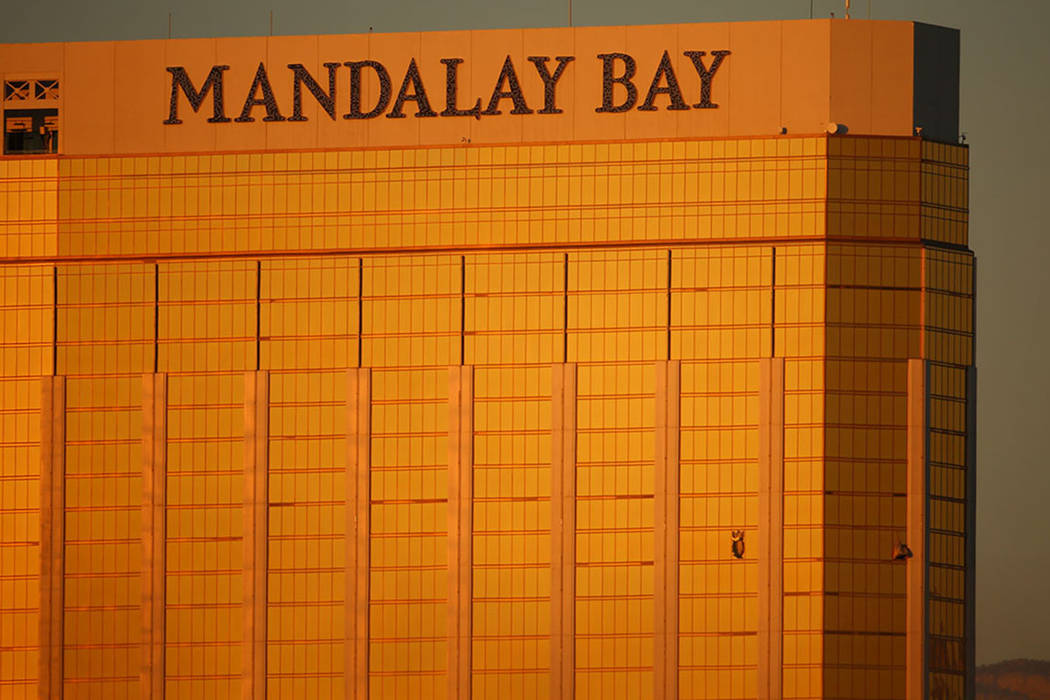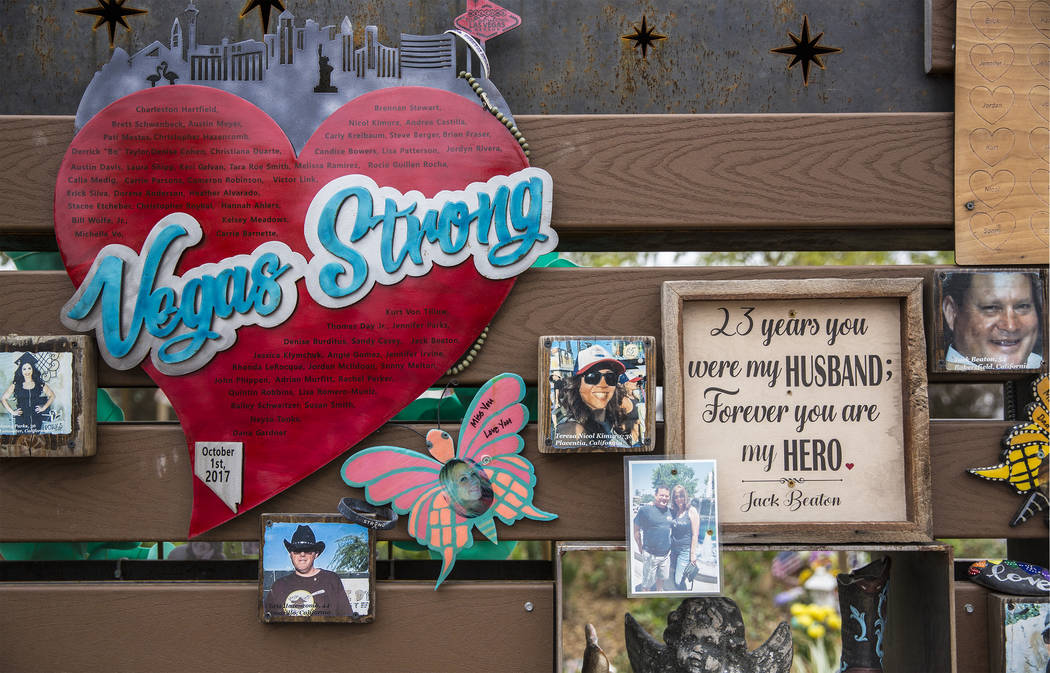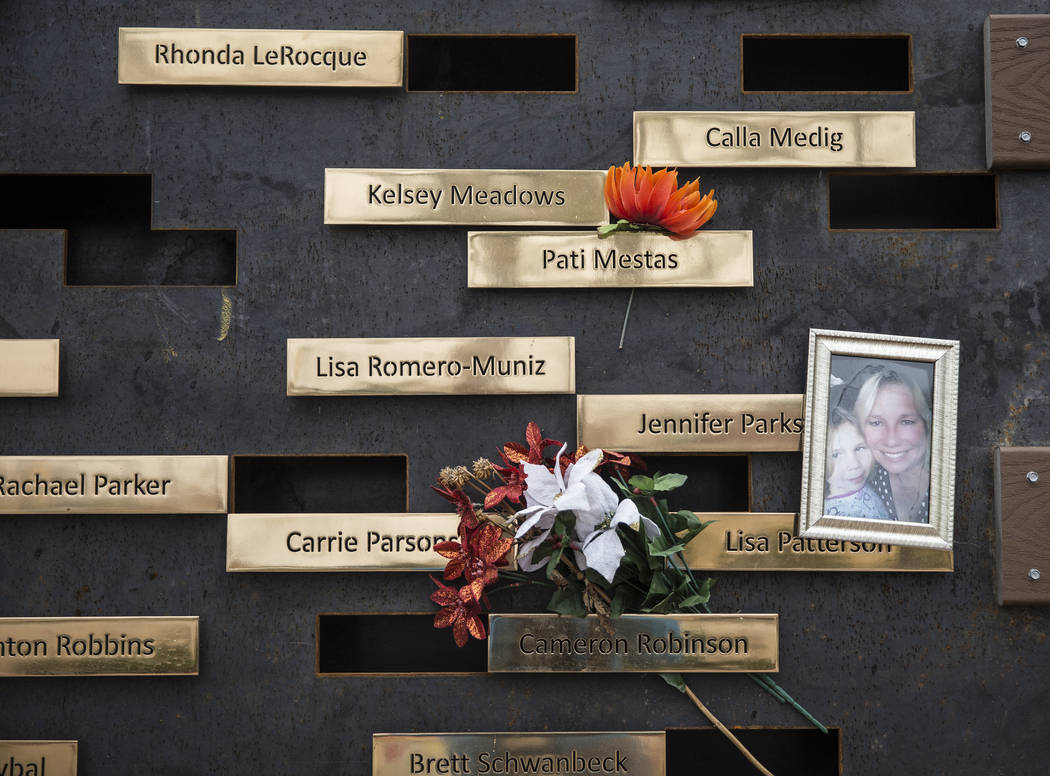Las Vegas police release final records from Oct. 1 massacre
The final batch of Las Vegas police records from the Route 91 Harvest festival massacre included an account from the first officer to enter the gunman’s Mandalay Bay suite.
Police released hundreds of pages of documents Wednesday, marking the 35th time since May that they have handed over records from the Oct. 1, 2017, attack.
The account from SWAT officer Levi Hancock describes moments of bravery as he led a group of officers with less tactical experience into Stephen Paddock’s suite. To protect them, they had only what Hancock described as a “piddely (sic) patrol shield” that stood no match for the killer’s many rifles.
Hancock’s account is documented in a transcribed interview conducted by a Metropolitan Police Department detective on Oct. 3, 2017, and it marked the public’s first detailed look into his actions that night. The Las Vegas Review-Journal previously reported that Hancock never activated his body camera, and while police have summarized his actions, the department has not made him available for media interviews.
Heading to the scene
Hancock was scheduled to work the night of the attack, which left 58 concertgoers dead and more than 800 injured. His first indication that something terrible was unfolding on the Strip came in the form of a text message from his sergeant, Hancock told the detective who interviewed him. He immediately headed to the scene.
When Hancock arrived at the back of Mandalay Bay, he was by himself, he said. Most other SWAT officers were responding to a nearby police substation, which had been designated as temporary, tactical headquarters.
Weighing the gravity of the situation, Hancock decided to go in alone.
Inside the casino, he linked up with a group of patrol officers, then rode an elevator with them to the 32nd floor, where the shooter’s suite was located. The elevator doors opened to a “whole contingent of officers” in the rotunda area who started spitting out “intel,” he said.
As Hancock listened, he peered down the 100-wing hallway, which at the very end housed the suite in question. About half way down the hallway, he noticed officers tucked into alcoves and one officer splayed out on the ground, pointing a rifle at the suite’s double doors.
Hancock balked. It was a bad position for that officer to be in. He ordered him out of there and took the lead.
As Hancock started down the hallway himself, though, he suddenly remembered from his days patrolling Strip fireworks displays that there was a stairwell at the end of the hall. He led a group of officers there via the 31st floor, he told the detective.
Breaching the room
When Hancock made it to the stairwell door that led to the killer’s suite, he realized it was bolted shut. Hancock told the detective during his interview that he was under the impression that security had bolted the door, but police previously have said Paddock did it.
Mandalay Bay security guard Jesus Campos discovered that the door was bolted shut shortly before he was shot in the hallway when the attack began.
Using a pry tool, Hancock got the door loose, then peeked into the hallway. He noticed a food service cart with wires dangling from it and assumed it was a small explosive device of some sort. Police have said it was a camera.
At the time, though, Hancock told surrounding officers that even if it was an explosive, they needed to move forward.
Hancock carefully attached explosives to Paddock’s doors, instructed officers to cover their ears and popped the charge, blowing out the doors. He then led a group of officers into the suite.
“I knew that the — the guys behind me didn’t have the same training and experience that I had so I opted to take it as slow as possible,” he told the detective.
Carefully, they cleared the first room, where they found Paddock dead surrounded by his arsenal of weapons. When they came to a locked door that led to the connecting room that Paddock also rented, Hancock tried to kick it down but failed. So he prepared another explosive breach.
Just after that charge went off, a second officer in the room, Sean O’Donnell, accidentally discharged three rounds, Hancock told the detective, adding that O’Donnell said he thought he saw something. Officials have called the three-round burst “negligent.”
After the team cleared the room, officers filed out. Shortly after, Hancock returned to the room to take photos, according to a different interview transcription released Wednesday. He and other officers suggested they were ordered to do so by Capt. Chris Tomaino, who was formerly over SWAT but now heads the department’s Southern Nevada Counter-Terrorism Center.
A photo of Paddock was leaked to the press in the hours after the massacre. Police have said they investigated the matter but never disclosed if they found who was responsible for the leak or ever imposed discipline.
Metro declined to comment for this story Wednesday.
Court battle
The newly released records consisted primarily of investigative reports and transcribed interviews with officers. The last time police released records from the mass shooting was Dec. 27.
Police disclosed hundreds of hours of body camera footage, 911 call audio and more than 3,000 pages of witness statements and officer reports after the Review-Journal and other media organizations sued for their release.
Metro fought to withhold the records for months. In April, the Nevada Supreme Court ordered the department to begin handing them over on a rolling basis.
Starting in May, Metro began releasing them on a weekly basis in no particular order, and for months refused to identify the officers whose body cameras recorded footage. The department also refused to confirm the exact time at which all videos were filmed.
A Review-Journal investigation found that many officers experienced communication problems during the mass shooting response.
Metro released its final report on the shooting investigation in early August. The FBI released a three-page summary report on the shooting in January.
Contact Rachel Crosby at rcrosby@reviewjournal.com or 702-477-3801. Follow @rachelacrosby on Twitter.




















